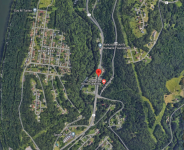slicerwizard
Member
OMG. The ACK is the response!Effectively the ACK is the recognition, but the RESP corresponds or requests a response, a confirmation of having received that message and responds that the RX OK message is received, not that it has recognized that station.
Confirmed data transmissions get a response - ACK/OK or NAK/Retry.
It's right there. The message in question is a RESPonse and that response is ACK.
RESP is a response, not a request for a response. The request for a response is "Conf Data" - the sender specifies that a confirmation response is required.
BTW, your claim that the one transmission is both a request for a response sent by the message originator and the recipient's response is quite frankly, ludicrous.


